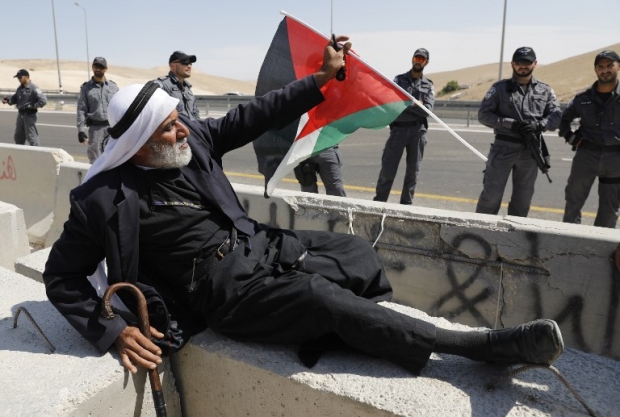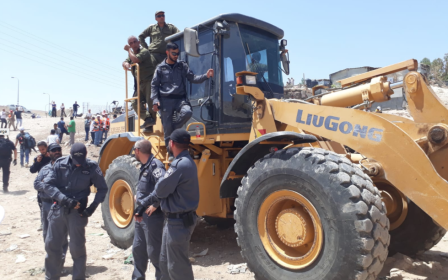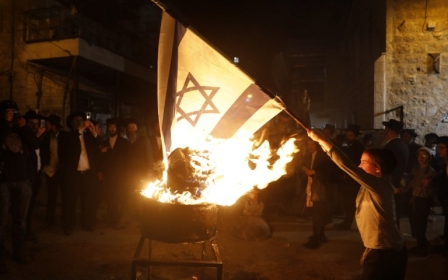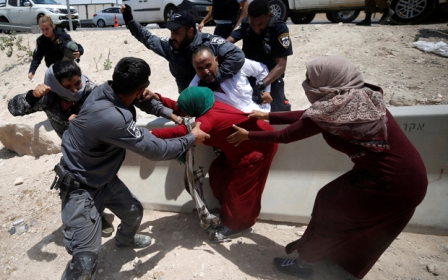Khan al-Ahmar: Where Palestinian children live in trauma
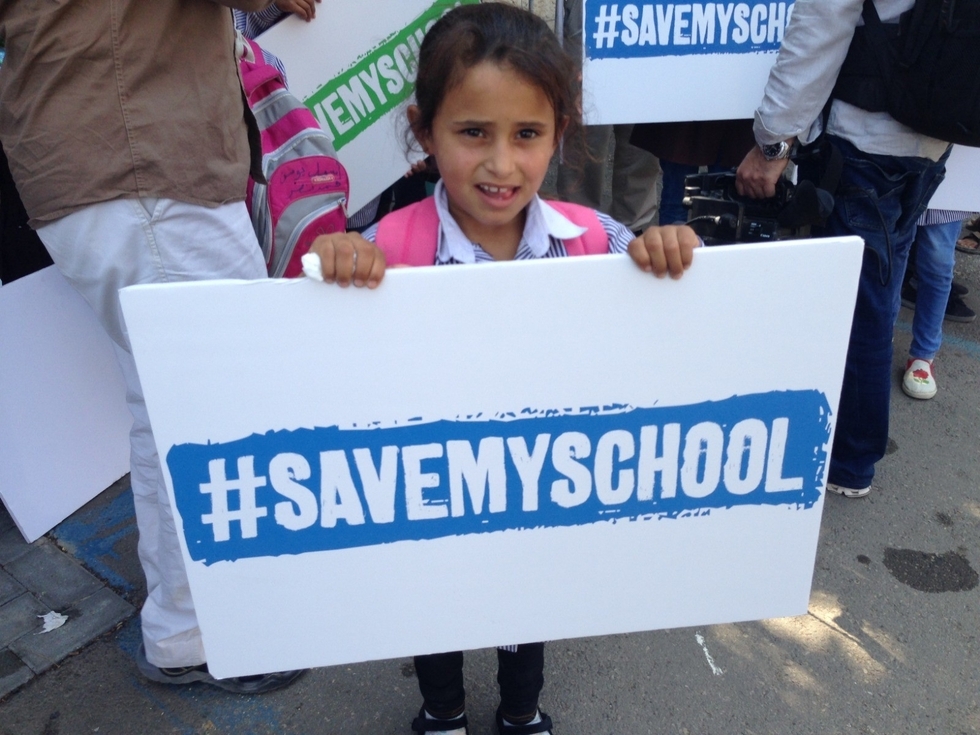
Under a huge mulberry tree planted decades ago by the Jahalin Bedouin of Khan al-Ahmar, I listen to a magical chorus of sparrows.
“How many birds are in these trees?” I ask. “Fifty?”
Sara abu Dahouk, whose home is under the trees, replies: "No, far more... about 100." She pauses, before asking: “If they destroy our homes and the school, will the Israelis also destroy the tree?”
This makes me think of Dr Sami Assad and his wife, who lost 180 trees in their bird-filled garden, a small paradise like this one - where even in the midday Judaean Desert heat, there is the relief of a light breeze and the cool, green shadow of leaves.
Way of life threatened
Dr Sami’s trees were uprooted by Israel to build a hideous structure: the Qalandia checkpoint. The wall route there, and everywhere, was designed by the mayor of Kfar Adumim, retired army colonel Danny Tirza, whose home overlooks the endangered bird paradise in Khan al-Ahmar.
As a member of the Jerusalem Periphery Forum, Tirza is known by his neighbours (some of whom are supporting the Bedouins’ struggle) as one of the most hardline in pushing to eradicate the Bedouin presence in this region, along with any non-Jewish presence in Greater Jerusalem - a huge area that includes the settlement blocs of Givat Zeev, Gush Etzion and Maale Adumim.
Nevermind that these Bedouins arrived here first, in the 1950s, when this land was ruled by Jordan and zoned as desert lands, so their tents required no building permits.
Israel's right-wing government does not want peace, even when it pretends to. Unlike most kindergarteners, it does not know how to share its toys, preferring to play the blame game rather than to solve this terrible tragedy
Another neighbour, Agriculture Minister Uri Ariel, reportedly developed a plan in the 1970s to transfer the Bedouin out of this region - which is ironic, considering that Kfar Adumim settlers claim the Bedouin weren’t there when their settlement was established in 1979.
Today, visiting psychologists say that the children in Khan al-Ahmar are traumatised, worried about their future, homes, school and way of life. And joining me now, under the mulberry tree, is the elderly Salha (age unknown to her). "I’m so tired," Salha tells me. “I can’t sleep at night. I’m exhausted… I’m just so worried for the children.”
Along with filmmaker Guy Davidi, I made a couple of short videos titled Twilight of a School to record these children’s dreams and to highlight their rich culture, deeply embedded in the desert. Later, we will check in to see if those dreams are on track, as the Israeli government pushes for the forcible displacement of all Bedouins in the occupied Palestinian territories.
Who wants peace?
According to the UN’s humanitarian agency, Israel has issued demolition orders against around 13,000 structures, potentially impacting tens of thousands of Palestinians, many of whom are children.
I once spoke with Ron Dermer, Israel’s ambassador to Washington, and asked him how serious the country was about securing peace.
“Of course we want peace,” he asserted. “But we have to have a partner.”
“So what’s your suggestion?” he responded.
“We have to open our hearts and be generous, give them what they need to be able to be at peace with us, and stop this shuk mentality,” I suggested. “As the stronger party, we must be the ones giving… and then go on to save the planet.”
At this point, Dermer abruptly left, without even a diplomatic farewell. And therein lies the problem: Israel's right-wing government does not want peace, even when it pretends to. Unlike most kindergarteners, it does not know how to share its toys, preferring to play the blame game rather than to solve this terrible tragedy.
Civil society pressure
According to rumours circulating within the community and among activists, the Israeli military, knowing that displacement is a war crime under the Geneva Conventions, does not want to demolish the village or school.
But the Israeli government surely wants to destroy Khan al-Ahmar to play to the far-right crowds in the next election. At the same time, US President Donald Trump’s decision to move the US embassy to Jerusalem has bolstered their cause.
Meanwhile, 180 Bedouins in Khan al-Ahmar, including the children at its charming school, are living under immense stress. The precedent of expulsion in the case of Umm al-Hiran flashes red, a warning light.
If the international community cannot uphold its own red lines, are we in a new reality, where the law of the jungle applies - where the system is so damaged that we’re creating what we fear?
We are at a turning point, at the moment of truth that the peace activists have been predicting for many years.
Only civil society pressure on politicians can help, so please contact your representatives and ask what they’re doing to protect Palestinian Bedouin children from trauma.
- Angela Godfrey-Goldstein is a peace activist, and co-directs Jahalin Solidarity, whose mission statement is to prevent forcible displacement.
The views expressed in this article belong to the author and do not necessarily reflect the editorial policy of Middle East Eye.
Photo: A Palestinian child of the Bedouin village of Khan al-Ahmar (Photo: Angela Godfrey-Goldstein)
Middle East Eye propose une couverture et une analyse indépendantes et incomparables du Moyen-Orient, de l’Afrique du Nord et d’autres régions du monde. Pour en savoir plus sur la reprise de ce contenu et les frais qui s’appliquent, veuillez remplir ce formulaire [en anglais]. Pour en savoir plus sur MEE, cliquez ici [en anglais].



